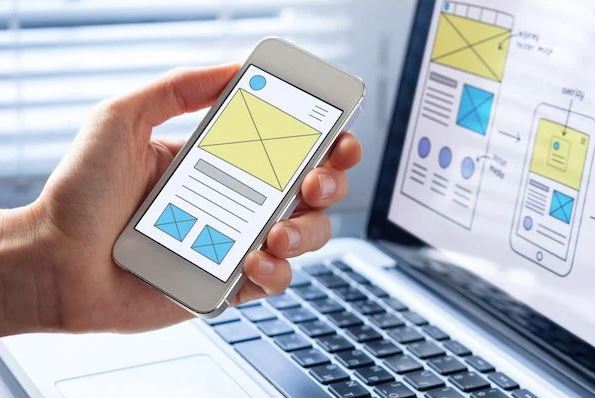
Introduction
Every user has the same goal — to use your product effectively and efficiently. Only then will they decide it’s a good fit for their needs. And if a user can’t find value in your product, it won’t take long for them to move on to something else.
Usability testing is an essential part of testing a new product. It allows us to find problems, fix issues, and create a better product. However, even if you know that usability tests are essential, choosing between different tests can be challenging. If your product is not user-friendly, you’ll lose customers, which can damage your company’s reputation.
In this article, we’ll share the best four usability testing methods.
Usability Testing: Overview and Importance
Usability testing, also known as a user experience test or UX test, is a method of evaluating the effectiveness of a product by testing it on real users. In usability testing, a product is tested in a real-world setting, with real people using it. This can be done by hiring professional usability testers or by recruiting volunteers from within your target market.
Usability testing is used to evaluate how easy or difficult an interface is to use, how well it achieves its goals and whether the features are easy to find and understand. It is often performed on websites and software applications but can also be performed on physical objects such as appliances or electronic devices.
Usability Testing: Popular Methods
Card Sorting
Card sorting is an organizing strategy for reviewing and designing a website’s or application’s navigation and structure. In a card sort session, participants are given a random list of items, such as all of the products included in a navigation menu, and asked to organize the items logically.
Depending on the type of card sorting mechanism employed, participants may additionally request to name the groups they create, defining the various categories and subcategories of a website or app. The goal is to make it easier, more logical, and more user-friendly to navigate the website or app.
Card sorting and tree testing can be combined to improve the design and user experience. Tree testing, another type of usability test, is similar to card sorting. Because it requires users to seek out information rather than the group it, tree testing is commonly referred to as “reverse card sorting.”
Guerilla Testing
Hallway testing, often known as guerilla testing, is a simple practice.You have to find someone eager to engage with your product in exchange for a free coffee or an Amazon gift card in a public place like a cafe. This testing usually takes five to ten minutes, and the tasks that test participants must complete should not be complex.
Guerilla testing is most effective in the early stages of product development when you have a low-fidelity prototype and are still experimenting with different product design options. It will assist you in determining whether you are headed the right way and, if necessary, adjusting your course of action.
Guerilla testing has several advantages. For starters, it’s a costly testing method because the participants aren’t compensated much for their time. You also don’t need to set up a unique testing environment. In terms of outcomes, this type of exam collects participants’ actual emotional responses. You’ll be able to witness how your design affects people in real-time and assess whether or not your concept excites them.
However, it would help if you were aware of the drawbacks of guerrilla testing. Because the test participants are chosen randomly, they may or may not be members of your target audience. As a result, guerilla testing is particularly unsuitable for niche items that necessitate specialized user abilities.
Furthermore, the short duration of the sessions imposes constraints. You have five or ten minutes, so you can’t expect people to do much. Also, unless you collect contact information, you won’t be able to repeat the tests with the same participant, which is uncommon in this approach. As a result, you won’t be able to run a second round with the same participants to observe if any of the adjustments you’ve made have improved their experiences.
With these advantages and disadvantages in mind, you should run a guerrilla test according to a few easy criteria. Determine the most critical questions and tasks for test-takers to complete. Focus on only the most essential details directly connected to your research aim, and ignore anything else.
Don’t try to recall everything that the test subjects say or do. Human memory is prone to errors. Therefore you won’t be able to identify every detail. Also, remember to take notes while you’re being tested.
Session recording
Session recording is one of the most effective and dependable tools for user testing. You can record your users’ sessions in real-time with session recording. The data session replays allow you to determine which features are the most popular among consumers. You can also figure out what appears to be causing your consumers problems.
You’ll need session recording software to use this method from our list of mobile usability tests and app usability testing
methods.
Session recording is most effective when combined with other methods of usability assessment. Based on session replays, you can create assumptions about the issues users are having. However, you will need to do additional testing to determine the root causes of their problems.
Lab usability testing
Usability testing in the lab is a ‘qualitative’ research method in which users are recorded while attempting to perform a series of activities on a website or application.
Each session is facilitated (or moderated’) by a User Experience (UX) expert and lasts between 45 minutes and one hour in a purpose-built laboratory. A camera records the participant’s actions and audio (as they talk out), while special software records the activity on the screen (and finger gestures if touchscreen devices are used).
The sessions’ recordings are preserved for later review and analysis, but they can also be seen in real-time from a dedicated viewing room or any PC or tablet anywhere in the world. There is always the risk of creating non-realistic user behavior by placing the user in a controlled environment. When it comes to lab testing, there’s always the possibility that the controlled environment will differ from the user’s actual situation.
5-second test
Five-second testing is a user research technique that allows you to determine a user’s initial impressions of a design. Participants are shown a five-second image of a landing page or screen and then asked a follow-up question about what they saw in a five-second test.
Five-second tests evaluate users’ recollections and determine what information they retain. They can be used to test messages and all types of communication on external-facing assets to see if your design effectively delivers its central message to the target audience.
Participants in a five-second test are given five seconds to evaluate a design before answering some easy questions. The outcomes include both quantitative and qualitative user experiences that can be used to improve a design.
Five-second testing is an effective technique to gather qualitative data on consumers’ initial perceptions and emotions. This can help you figure out what information stands out to them, what they like and dislike, and what they remember so you can ensure your website delivers the correct content to the targeted people.
A five-second test’s data can also be quantified and classified into two groups: those who ‘got it and those who didn’t. You can assess the message’s efficacy based on the ratio of outcomes and then dig further into individual comments to discover more.
Displaying testers a preview of a design, a model, a wireframe, or a webpage can be used to conduct five-second testing in person or virtually using a user testing website.
Eye-tracking
The process of measuring what region of a website or app someone is looking at, or the movement of eyes with respect to the head, is known as eye-tracking. This technology delivers previously unavailable insights into your users and enables a new understanding of the interaction between users and interfaces.
On mobile devices, most user interactions take the form of clicking, swiping, or scrolling. These user patterns are relatively prevalent if we think about it. These trends provide us with helpful information about our users. However, things get complicated when there is no physical interaction, such as when someone is reading a text or watching a video.
In the dreaded situation where users say they “simply don’t get it,” eye tracking can emphasize user behavior. It could be challenging to determine what went wrong without physical interaction. It’s possible that the person is perplexed, searching for something, or stuck. Eye-tracking technology that highlights where the user is looking can convey that “why.”
A pupil tracking gadget monitors a user’s eye movement in an eye-tracking website usability testing method. It creates computer heatmaps or pathway diagrams that analyze where a user clicks or hovers when asked to accomplish a job. This allows a company to determine which parts of a website are the most effective in grabbing a user’s attention.
Brands who want to figure out how users interact with a website’s design should employ this research strategy.
Contextual inquiry
Contextual inquiry is a semi-structured interview method for gathering information on the context of usage in which users are first asked a set of standard questions before being observed and questioned in their environments.
Contextual inquiry is built on principles that enable it to be tailored to various settings. This method is typically used at the start of the design process to gather detailed information about work habits, social, technical, and physical surroundings, and user tools. The analytical data is more realistic than laboratory data since consumers are interviewed in their settings.
The following are the four principles of contextual inquiry:
Focus – Make a plan for your investigation based on a clear grasp of your goal.
Context – Visit the customer’s place of business and see them at work.
Partnership – Talk to clients about their jobs and get them involved in unearthing unarticulated components of the job.
Interpretation – Work with the customer to develop a shared understanding of the crucial components of the job.
Contextual inquiry can be used to create requirements, improve a process, learn what matters to users and consumers, or learn more about a new subject to inform future projects.
Tree Testing
Tree testing helps assess your content’s hierarchical structure and discoverability. You might be wondering why the word tree appears in this testing. A typical website/mobile app has a hierarchical structure with categories and subcategories that branch out from the homepage/home screen. This content structure has the appearance of a tree. Tree testing evaluates findability inside a website or app’s hierarchy, and it’s a quick and effective way to test categories and labels with your audience.
A task-based activity is tree testing. Participants in the test are asked to locate some aspects of the existing structure. You can look at where your users would expect to find information and make changes there. You can look into where your users wish to find information and make changes to your product depending on their expectations.
Conclusion
Creating a better user experience makes a great product even more remarkable. Its value doesn’t stop at the features that stand out on the market: it’s about making your product accessible to everyone, and testing usability methods is one of the easiest ways to achieve that. Simply put, usability testing methods are a valuable asset for a design that can be adopted into any project.
There are many ways to conduct usability studies. We have listed nine methods here, which should help you find the optimum method for your product. Many companies may not need to go through all of them during the same project. We recommend you explore the ways and find a couple that works for you.





